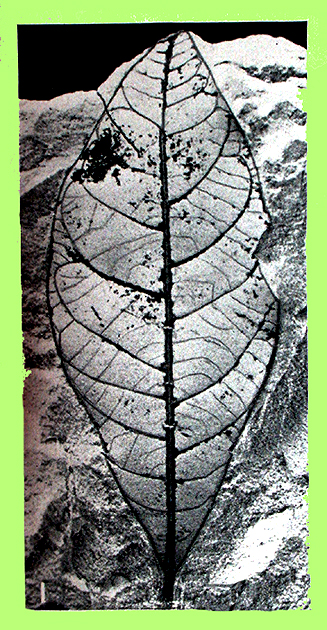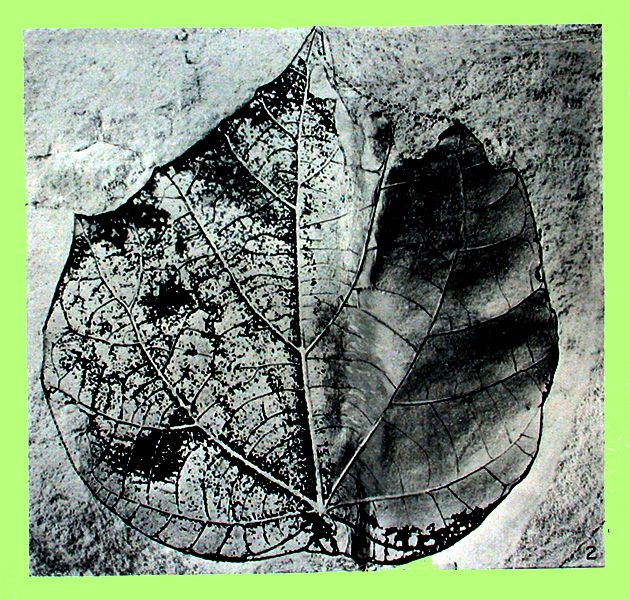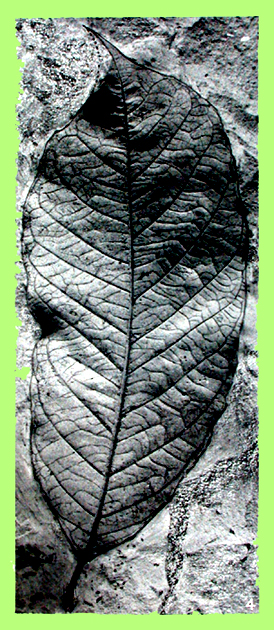



|
Top to bottom--Fossil leaves from the upper Eocene La Porte Tuff, secured from an abandoned hydraulic gold mine in the vicinity of La Porte, Sierra Nevada, California. Top--Tabernaemontana intermedia, the Eocene equivalent of the living Tabernaemontana lanceolata--common name Grape jasmine. An evergreen shrub or small tree that grows from about one and half to 16 feet tall. Present native range is southern China, India, Myanmar, and Thailand. Grows at elevations from 330 to 5,250 feet in southern China. Middle--Alangiophyllum petiocaulum: A presumably extinct Eocene species that shows closest relationships to the modern Alangium chinese, a shrub or small trees that grows to about 11 and a half feet in forest margins and exposed areas below 8,200 feet in China (Anhui, Chongqing, Fujian, Gansu, Guangdong, Guangxi, Guizhou, Hainan, Henan, Hubei, Hunan, Jiangsu, Jiangxi, Shanxi, Sichuan, Yunnan, and Zhejiang), Taiwan, south Tibet, Bhutan, India, Nepal, east Africa, and southeast Asia. Bottom--Phyllites laportiana: A form genus-species of uncertain taxonomic relationship (Incertae sedis). Presumably an extinct species. In studying the upper Eocene La Porte Flora, paleobotanist Susan S. Potbury concluded rather succinctly: "Thus far, no clues regarding its taxonomic affinities have been discovered." Photographs courtesy Susan S. Potbury, from her publication The La Porte Flora Of Plumas County, California, originally issued November 25, 1935; contained in Carnegie Institute of Washington Publication 465, 1937, Eocene Flora Of Western America. I edited and processed the images through photoshop; adding the green border, for one. Note--Always check with the US Forest Service to determine if unauthorized fossil collecting is allowed at the La Porte locality. |